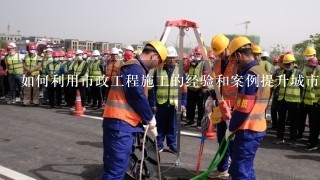如何利用市政工程施工的经验和案例提升城市公共设施的安全性和可持续性?

City Infrastructure Safety and Sustainability Enhancement through Public Engineering Construction Experience and Case Studies
Introduction:
City infrastructure, including transportation, water, and sanitation systems, plays a crucial role in the well-being and sustainability of a city. Ensuring the safety and reliability of these facilities is paramount. Traditional construction methods often result in infrastructure that is vulnerable to damage, maintenance issues, and environmental degradation.
Leveraging Public Engineering Construction (EPC) Experience and Case Studies:
Public Engineering Construction (EPC) is a project delivery model that involves private companies partnering with governments to design, build, operate, and maintain infrastructure projects. EPC can provide several benefits, including:
- Improved safety: EPC projects often prioritize safety from the outset, incorporating safety measures into the design and construction process.
- Enhanced sustainability: EPC projects can incorporate sustainable features, such as green infrastructure, renewable energy sources, and water conservation measures.
- Reduced maintenance costs: EPC projects often have long warranties and performance guarantees, reducing the need for costly maintenance.
- Increased transparency and accountability: EPC projects typically involve public engagement and transparency, fostering trust between the government and the public.
Case Studies:
- Sydney Metro Rail: Sydney's metro system is a testament to EPC's safety and sustainability. The project involved extensive use of concrete, steel, and renewable materials, resulting in a safe and efficient transportation network.
- Singapore's Marina Bay Sands: The iconic skyscraper is another example of EPC's ability to create a safe and sustainable landmark. The project incorporated advanced fireproofing and flood protection systems.
- London Underground: London Underground is a world-renowned example of efficient and sustainable urban infrastructure. The project involved extensive use of recycled materials and energy-efficient technologies.
Key Considerations for Safety and Sustainability Enhancement:
- Integrated safety management: EPC projects should establish a comprehensive safety management system that covers all aspects of the project.
- Sustainable materials and technologies: Use of sustainable materials and technologies can reduce the environmental impact of infrastructure.
- Risk assessment and mitigation: Identify and mitigate potential risks to ensure the safety of the public and the environment.
- Community engagement: Involve the community in the planning and design process to ensure the project meets their needs.
Conclusion:
Utilizing EPC experience and case studies can significantly enhance city infrastructure safety and sustainability. By prioritizing safety, sustainability, and transparency, EPC projects can create infrastructure that not only meets the present needs of the city but also sets a positive example for future generations.





































































